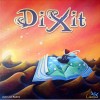drag badge here
percival
gamer level 3
1395 xp
1395 xp
followers
9
9
Use my invite URL to register (this will give me kudos)
https://boardgaming.com/register/?invited_by=percival
profile badges

...
...
...
recent achievements

Explorer - Level 2
Earn Explorer XP to level up by completing Explorer Quests!
Earn Explorer XP to level up by completing Explorer Quests!

Arrowhead
Explore select games by completing a series of exploration actions. learn more »
Explore select games by completing a series of exploration actions. learn more »

Novice Reviewer
Review 5 games and receive a total of 140 positive review ratings.
Review 5 games and receive a total of 140 positive review ratings.

Treasure Map
Explore select games by completing a series of exploration actions. learn more »
Explore select games by completing a series of exploration actions. learn more »
Player Stats
Critic (lvl 1)
270 xp
270 xp
Explorer (lvl 2)
319 xp
319 xp
Professor (lvl 2)
325 xp
325 xp
Reporter (lvl 0)
81 xp
81 xp
About Me
I like playing board games with theme, although I also enjoy eurogames from time to time. However, you will never see me playing abstract games, as they tend to make me sleepy.









































Catan: Cities & Knights
You were introduced to the boardgaming hobby with Settlers and you managed to avoid (probably) the 5-6 player expansion. But the gameplay starts getting a little bit repetitive, so you are thinking of reinvigorating the game with Cities & Knights. Should you do it?
The rules: The Cities & Knights expansion adds a lot. A whole lot. Settling Catan successfully was the only target in the base game. In C&K, this is not enough, as you must now also think about city development and defense. Apart from the usual resources of the base game, specific terrains now produce one of three commodities, provided that a city is built next to them. Commodities are the means to inner city development and if the urban infrastructure grows enough, a city becomes a metropolis, which is worth more victory points and is immune to attacks. Moreover, a special event die determines every turn if the barbarian fleet advances one step closer to Catan in order to pillage and destroy. If the players invest in the island defense by recruiting knights, there will be no problem; otherwise, cities may turn to rubble because of those savages.
The opinion: If you are a newcomer, avoid this game for now. Play the base game a lot, enjoy it and understand its mechanics. When you do that, go immediately and buy C&K. The depth that it provides is immense. Everyone I’ve played with admits that C&K is a must-have expansion for Settlers, as it turns a simple game into a challenging experience (but not overwhelming, at least for experienced players) by providing a plethora of choices and almost never making you feel that you are out of the game. The only drawback I can think of is the extra time that it needs to complete, as the game now lasts well over 2,5 hours. But if you enjoy Settlers but you now need a more challenging way to play, C&K is the perfect choice. Added depth, added length